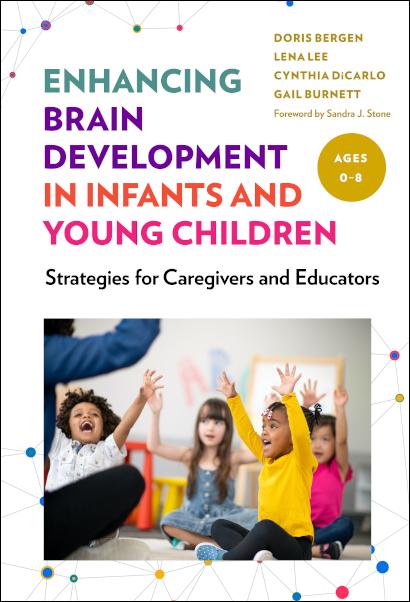Gail Burnett is co-author of Enhancing Brain Development in Infants and Young Children: Strategies for Caregivers and Educators. She is owner of Miss Gail Music and has received a Teacher’s Choice Award for exceptional quality preschool curriculum.
I grew up singing in the 60s. From as young as I can remember, my Mom plunked out music on the piano and we all belted songs from the famous musicals like Oklahoma, The Music Man and The King and I. We sang standards like Rodgers and Hart’s “My Funny Valentine” and George Gershwin’s “Our Love Is Here To Stay.” It didn’t matter how we sang or if we were “good.” My Mom has never considered herself a singer. But it didn’t matter. We just made music. It was part of our life.
Fast forward many years and with that foundation, I am now a professional musician. Though I went through the formal schooling and am classically trained, at heart I’m a “just wing it” improv cello player, singer, and children’s entertainer. My own kids, now young adults, grew up with me as a single mother with little money to put towards formal music lessons. But they too lived in a musical environment and both are now largely self-taught creative singer-songwriters.
In generations past, the only way to have music in the home was to make it. With the dawns of recorded music and video and growth in consumer technology and social media, children now have the majority of their musical experiences through passive listening and watching. Actually physically making music has all but fallen away except when intentionally planned by parents or caregivers.
But before you get too carried away by the thought that, perhaps, “I am not musical so how will my child or students have a chance?” or “how will I be able to create a musical environment when I have no idea how to play an instrument or even sing in tune?”, consider this: Genetics (or, “nature”) does play a part in a child’s potential musicality and journey to being a musical adult; however, there is also a very strong learned (or, “nurture”) component to becoming a musical person. Being intentional about creating a musical environment is not hard to do with a bit of knowledge.
If before the age of five a child is exposed to music in an appropriate way to make brain connections for rhythm and pitch, they are well on their way to becoming a musical adult—regardless of genetics. It does follow that parents and teachers who consider themselves musical will gravitate towards doing musical activities with children, perhaps giving the children they care for more exposure and success early on. In reality, however, all adults are musical to some extent. It is simply a matter of gaining the confidence and tools to enhance learning and intentionally expose children to participatory musical activities from an early age (even as young as birth).
In the book I co-authored, Enhancing Brain Development in Infants and Young Children: Strategies for Caregivers and Educators, my co-authors and I discuss how teachers and parents can learn ways to provide the best brain growth environment they can for all young children. Here are some specific ways to enhance musical brain growth:
- When children are too young to stand, hold them and dance! They will feel the beat through your body as if it were their own.
- Find child-safe musical instruments (or household things) and “play” on the beat.
- Children learn rhythm by seeing, hearing, and feeling. Every time you hear music, keep a steady and gentle beat somewhere on your child’s body, or rock back and forth.
- Jump, bounce, clap, swing, spin, kick, wave scarves, or move to the beat in other ways to reinforce large gross motor rhythm.
- Take them to a music class (many of which are now online!) specifically geared to 0-5 year olds.
- Sing, sing, sing! If you can match a pitch, see if your child can match it too. If you can’t…. Don’t worry. Sing anyway!
Featured image by: Elly Fairytale from Pexels

